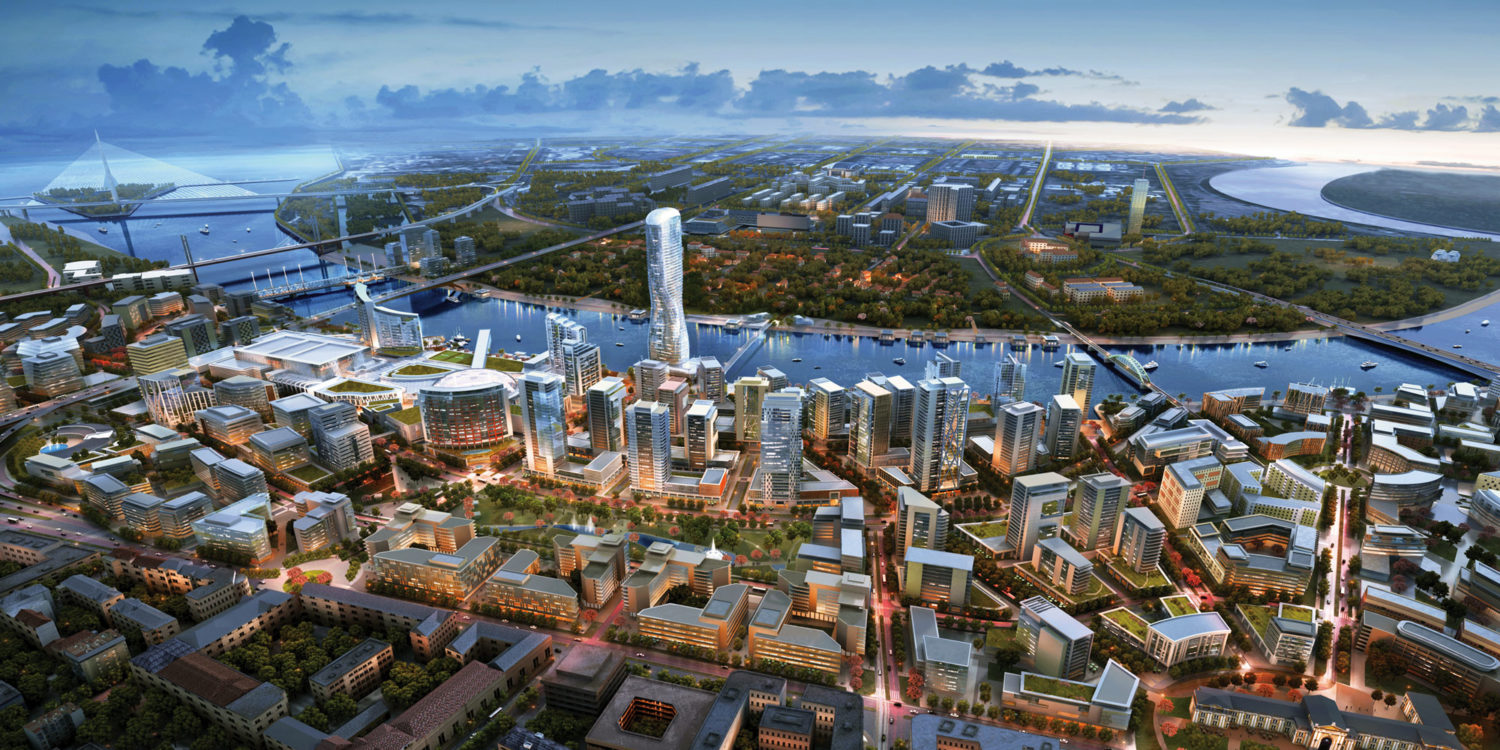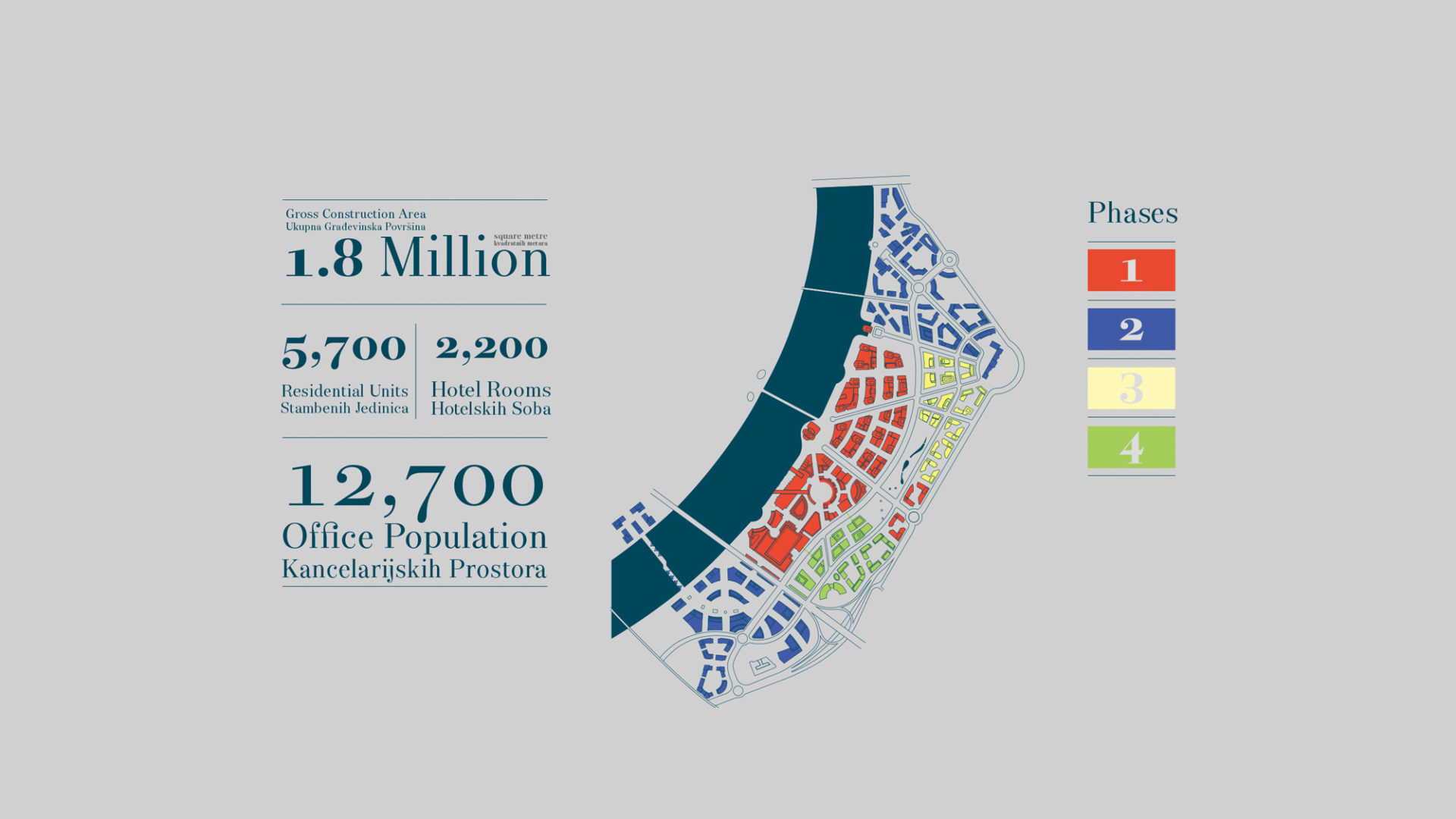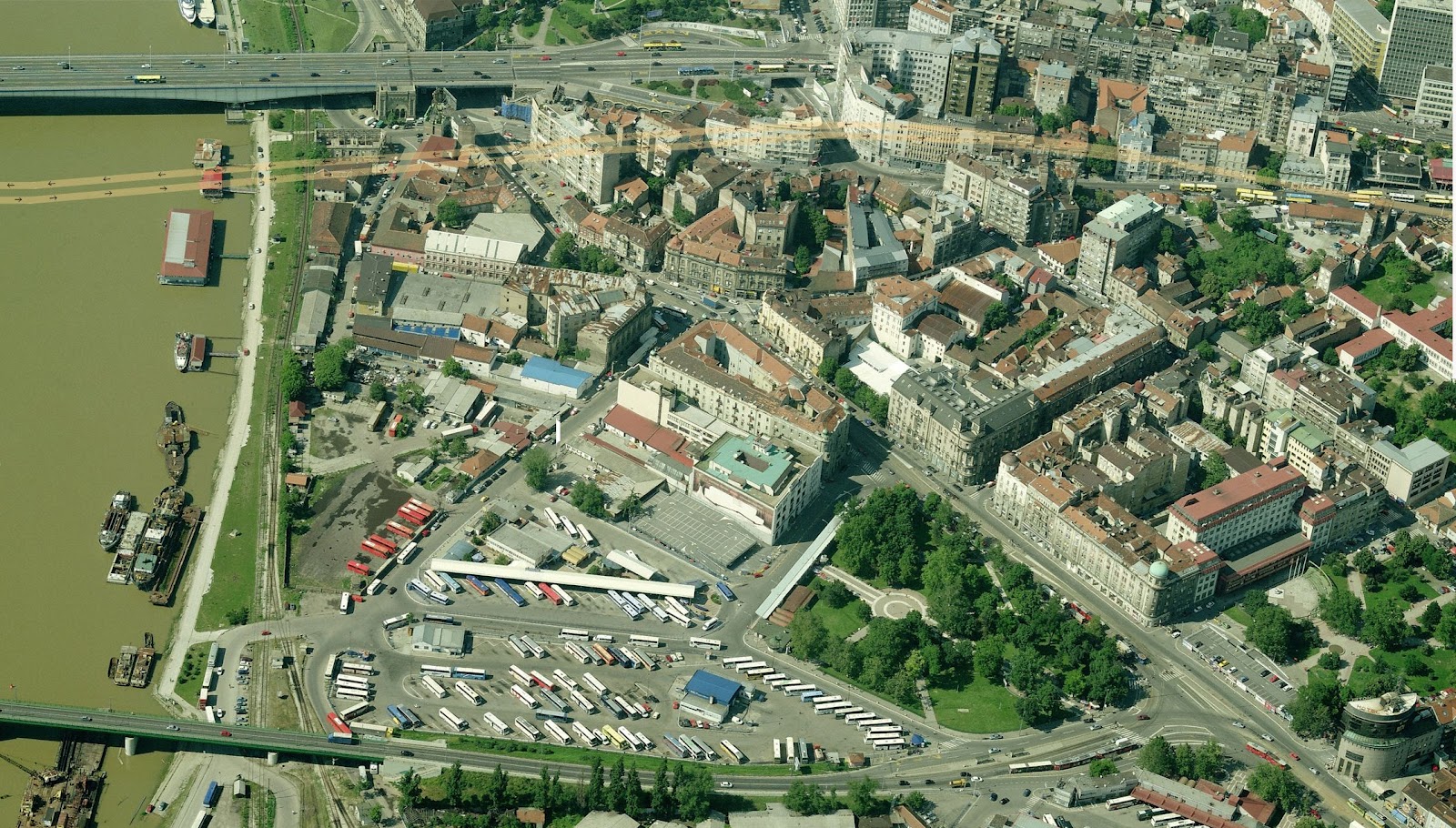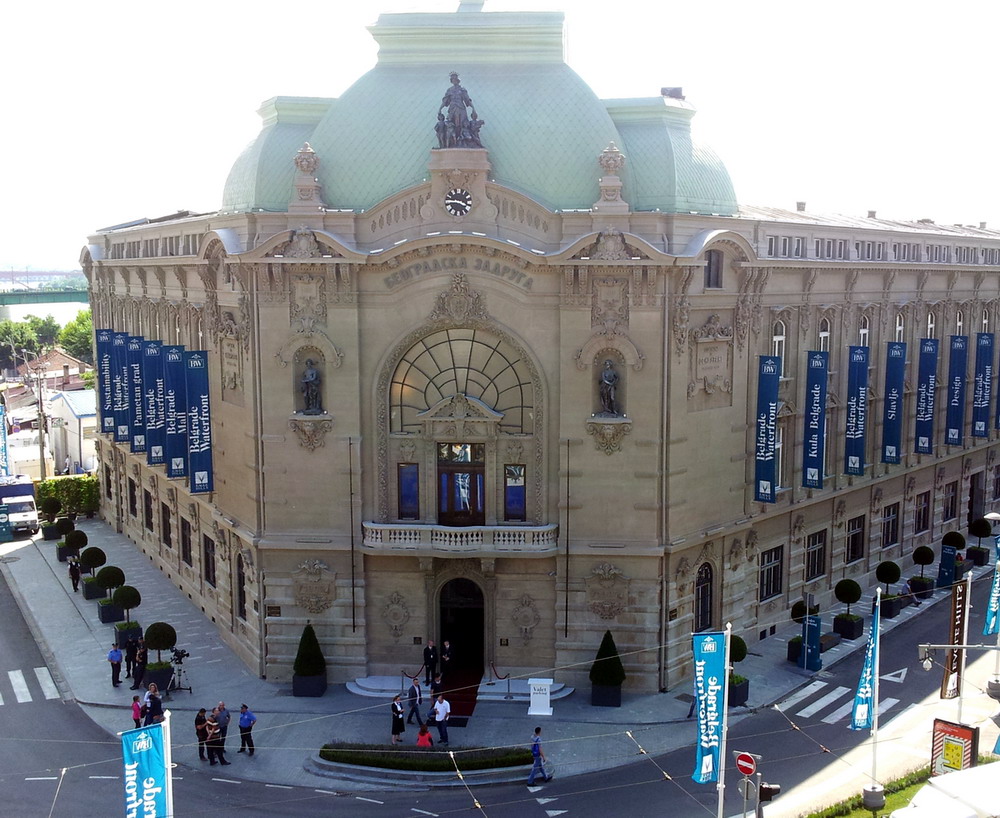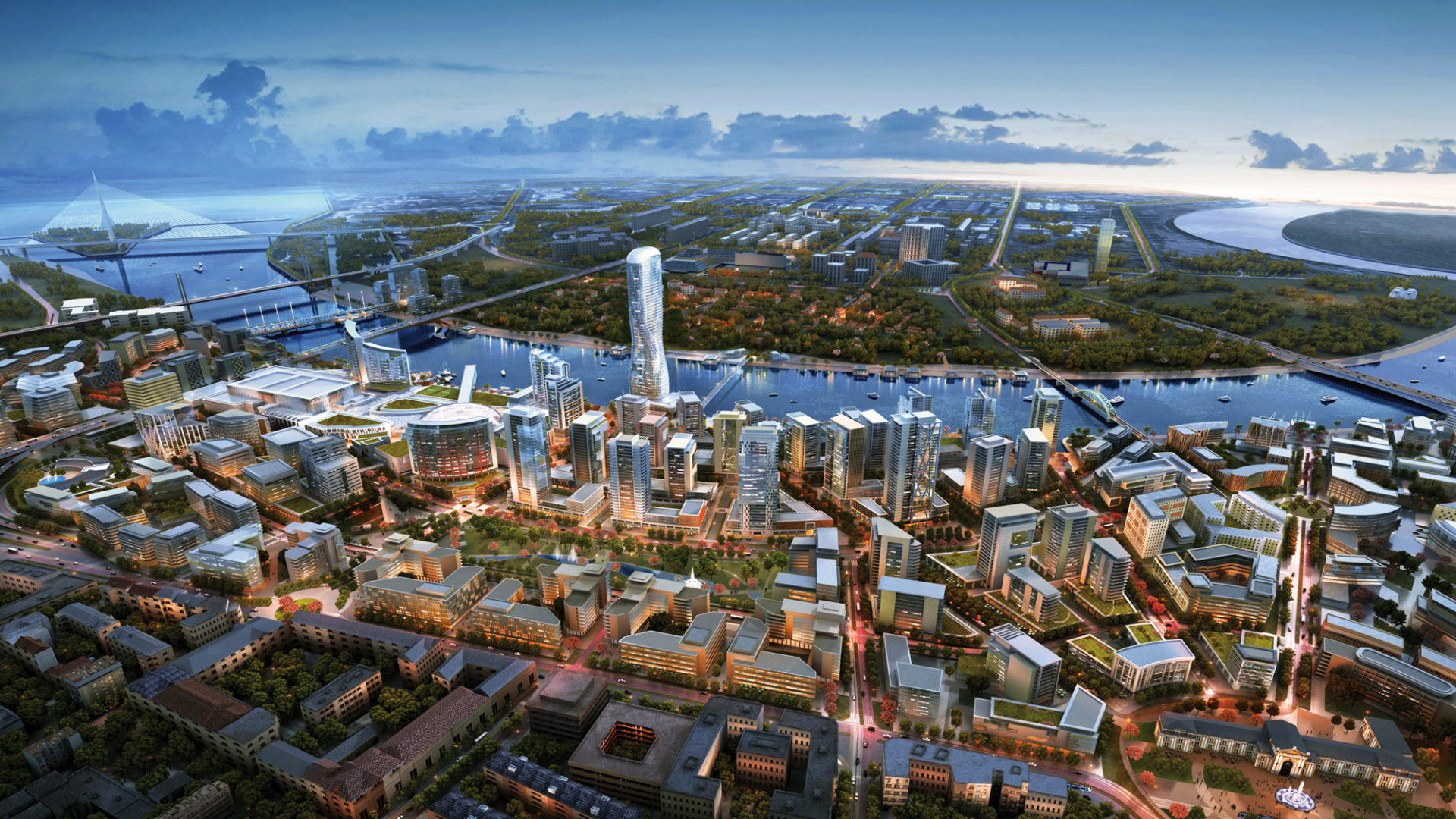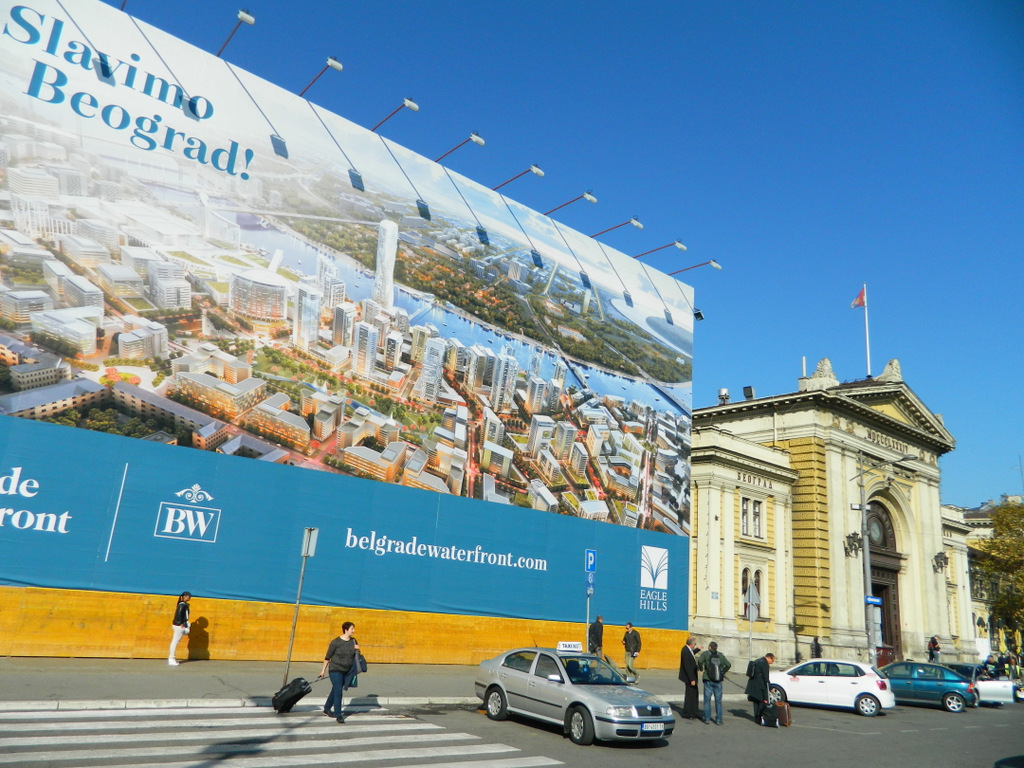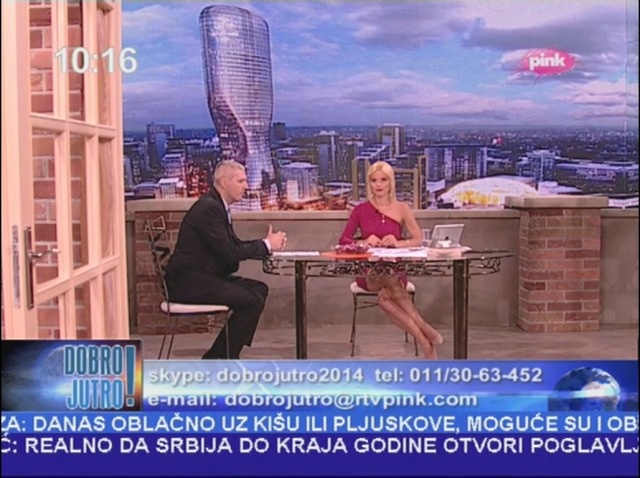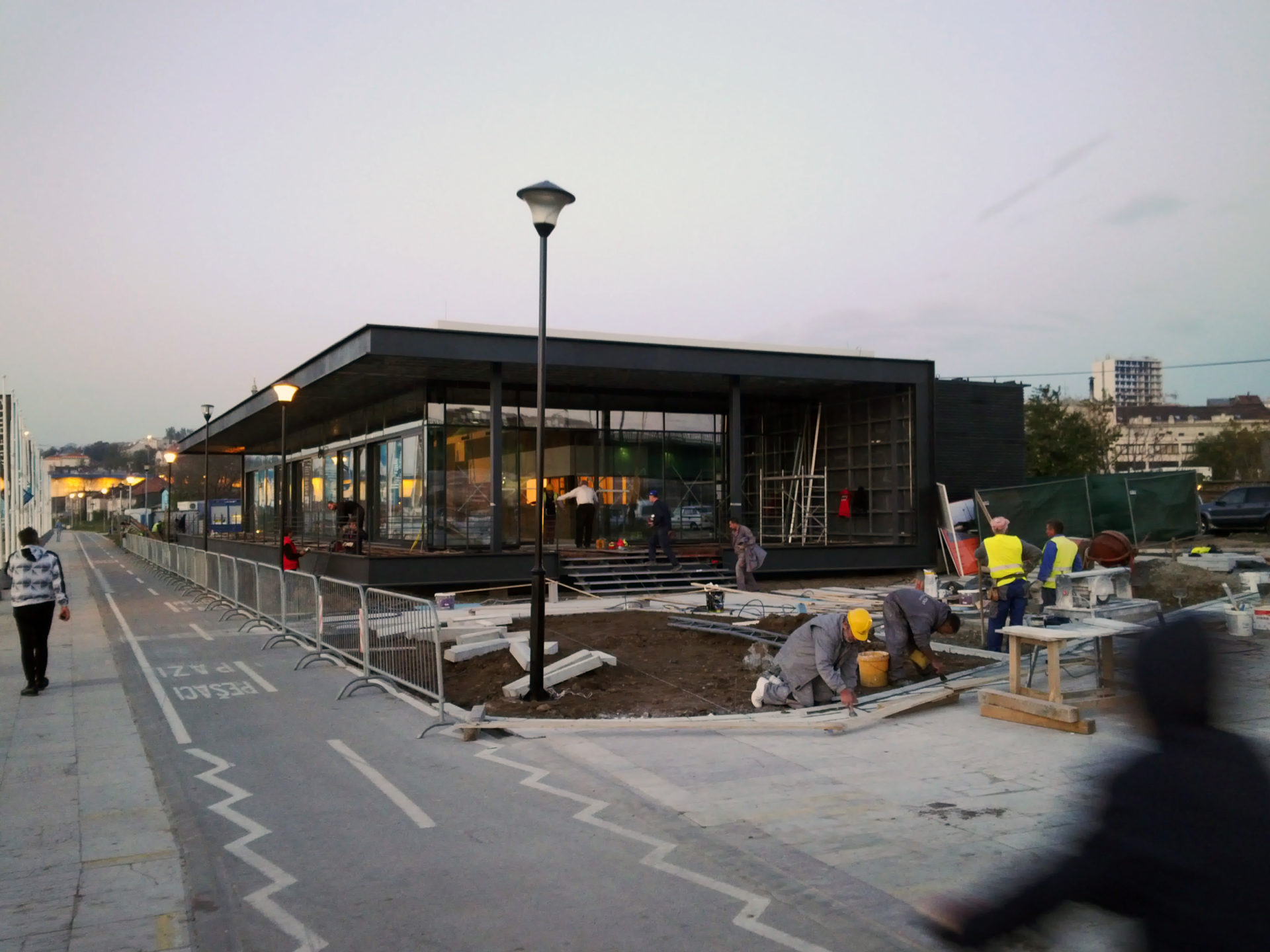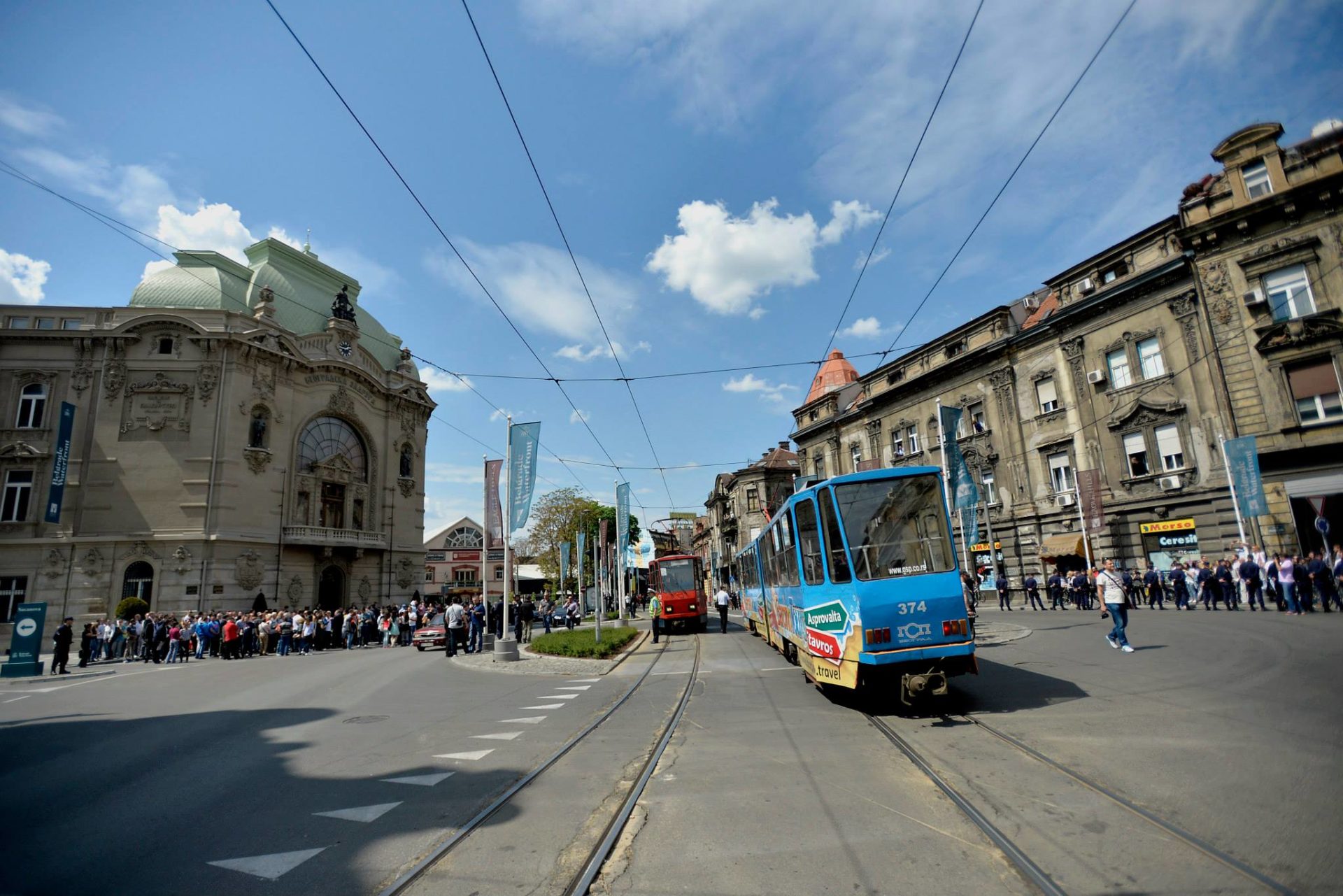In the past 25 years, it was almost impossible to see positive key words – develop, potential, ambitious or modern – in the global media relating to the name Belgrade or Serbia. That is, until the revelation of the Belgrade Waterfront project, also known as Beograd na Vodi (Belgrade on Water). Although an international project, its official English name is different. Well, it is a bewildering stream of information in which this project floats or sinks, depending on how deep you dive into it.
The Belgrade Waterfront project was announced for the first time in the spring of 2012. In the peak of the election campaign, during a friendly boat trip up the Sava River, First Vice President of Serbia, Aleksandar Vucic, revealed the plan (in front of cameras) to his guest, Rudolph Giuliani. A better future for Serbia and a solution for the country’s huge unemployment rate were to emerge from the rebuilding of the central zone of Belgrade which was confined by railway tracks and has been neglected for decades.
The idea of relocating the railway station and making the Waterfront a part of the vital urban fabric has been in Belgrade’s urban plans since 1923. Ever since the rivers ceased to be state borders, Belgrade has been on and off dreaming of “getting down to its rivers”. In the previous decades this has served well as an election campaign mantra, repeated in various forms of grandiose urban projects guided by political parties. This time, the novelty was the scale and scope of the vision.
To the fast lane
Two years later, the new election campaign brought a solution for untying the greatest Gordian knot of Belgrade: the investor was found. He was willing, not to credit, but to invest more than 3 billion dollars in Belgrade. Mohamed Alabbar, board member of the Abu Dhabi based Eagle Hills Company, presented the master plan to the Vucic. The grandiose project of nearly 2 million square meters of residential and office space was to be fully completed within a maximum period of eight years.
The duo premiered the project in Dubai at the beginning of March 2014. A new master plan featuring the designs of the tower and shopping mall was revealed. Allegedly, the Eagle Hills Company held an architectural competition for these two objects, but the word never reached the architects of Serbia.
The world premiere presentation of the project was held at MIPIM one week later, one of the leading international real estate and investment shows for property professionals. The public in Serbia were introduced to the project by viewing event photos in the media. Later the same month elections were held and Vucic became Prime Minister of Serbia.
The Belgrade Waterfront / Belgrade on Water project was declared to be of national significance. On what basis, and what the public interest in it was, remain unknown. However, it enabled the project to get “on the fast lane”, and sidestep being subject to the building projects procedures. When asked why there was no architectural competition, the Prime Minister replied that he “wouldn’t mind one, if the representative of the Architectural Union would find those 3 billion dollars”. He explained the fast lane with a picturesque story of visiting the Empire State Building and going up quickly, on a fast lane, by paying 20 dollars.
At the heart of Savamala
The Belgrade Waterfront project is spread on the southern bank of the Sava River, in the Savamala neighborhood. Savamala was a blossoming trade center at the turn of the 19thcentury and into the 20th. Its buildings are constructed on the models of European examples of that time. In the past few decades, it turned into a transit zone, an ignored and neglected part of the city with economic and social difficulties. In the last couple of years, it has been undergoing changes, as numerous cafes, nightclubs, creative industries and wistful cultural transformation projects are settling in the area.
The Belgrade Cooperative Building, famous as one of the city’s most beautiful edifice was once the central figure of Savamala, It shared the destiny of the area as it had been neglected for decades and thickly covered by urban greyness. The Eagle Hills Company made an agreement with the city representatives, to invest in its reconstruction, as an “act of generosity” and as “a start of good cooperation”. In return for the investment, the company got free use of over 6000 sq.m. of the aforementioned building for the next 3 years. Although its appearance has been improved and its architectural beauty can finally find a way to surface, the reconstruction was more of a cosmetics nature, while the basement remains soaked in water and not all interventions respected the heritage protection propositions. The beginning of the Belgrade Waterfront Project was thus officially announced.
At the end of June 2014, a public presentation of the project was held in this reconstructed building. In a room filled with high officials from both countries (Serbia and the UAE), the grandiose model of the master plan was revealed. Not much space was left for the public though.
The promotion
The reconstructed building also serves as a promotion place of the project. Part of its interior is refurbished into models of future apartment complexes and shops, showing the most prominent brands the shopping mall will host. This, together with the model of the master plan provided by the Eagle Hills Company, is accessible to all curious visitors wishing to see for themselves the future of the Belgrade Waterfront. It is also the only accessible information on the project that continued to gallop ahead.
Dubious renderings of the Belgrade Waterfront – picturing a seven hills city as completely flat, with no reference to its most significant landmarks and with generic copy / paste modern architecture – were flashed on billboards all over Serbia. Shiny pictures of a promised, and yet so elusive future, were followed by a slogan: Let’s Celebrate Belgrade / We Praise Belgrade. In the south of Serbia, where the living standard is on the verge of poverty (or far below), the billboards were immediately plastered over by those who did not welcome the promised revival of a highly centralized Serbia through the promotion of the lavish rebuilding of the capital.
Flags waving Eagle Hills and Belgrade Waterfront were stabbed into the ground all around the Savamala neighbourhood. A gigantic We Praise Belgrade poster was spread over the front façade of the main railway station; both lacking valid permits to be set at the publicly owned property, but the gigantic poster has a 24/7 police protection. “Welcome to the city of Eagle Hills and Belgrade Waterfront.”
The (lack of) reaction
It took almost two years for at least some of the professional public to react to the changes that were taking place. At first, no one believed any of the inflated announcements the politicians were propagating through the media. A scenario of big promises and flagship projects was thoroughly used by the preceding parties. The only “information” on the project are shiny pictures and big media talk – no facts, no legal documents or signed agreements, no analysis or scientific studies are given, so a great part of the population is still scepticalal about its realisation. Further on, the project rose on solid ground of apathy and distorted interpretation of a normal system. In a society whose government was voted by 53% of the population (March 2014), it may be stated that the corruption, lack of transparency, manipulation of information and misuse of public property is considered to be inevitable (by a significant amount of the population), and thus perceived as “normal”.
Numerous experts, several organisations, institutions, initiatives and independent media, still marginalised by the mass media and public, expressed their dissatisfaction regarding the process. A huge number of questions were raised concerning the legal, economic, social, architectural, financial, environmental, and almost every other possible aspect of the project. However, the mass media constantly remains to serve and promote the Belgrade Waterfront. On a city owned TV station, a TV show “Belgrade Waterfront” was launched, giving one-sided, positive views on the project.
The change of plans
Proposed by the investor, the Belgrade Waterfront master plan was in conflict with the General Urban Plan of Belgrade. In order to meet propositions of the General Urban Plan (GUP) of Belgrade, valid until the year 2012, it would have to go through numerous (concept) changes. Instead, the GUP was to be changed.
It was forbidden to record the public hearing held for GUP changes, which was held in the middle of the summer, at 12 pm on a working day. In a full room of people, it lasted six hours. Over 1200 written admonitions were made. The proposed changes, such as treating the river banks separately, repeal of the Building Height’s Study, repeal of the obligatory architectural competition and so on, were adopted, while almost no admonitions were adopted or elaborated.
In response to an act, perceived as a simulacrum of democracy, the citizens’ initiative Ne da(vi)mo Beograd (Don’t Drown Belgrade) was formed. The Initiative is active by raising important questions, while engaging the media, experts, planners and NGOs, and by taking direct action. It has organised several protests, a public admonition submission, public debates and is constantly working on demystifying the process, and inviting the public to react and involve itself in the future of the city. It has visibility, with numbers over 10 000, but its voice remains unheard by officials and mass media.
The second step in legalising the project was the production of the spatial plan for special purpose (PPPN) for the area. The taxpayers of Serbia have paid 500 000 euros for this plan of the highest rank (which does not comply with state law for urban areas) which does nothing but describe the investor’s master plan. It anticipates various problems, such as traffic jams and high segregation, but does not propose any solutions. The cost of an average flat proposed by the plan is 400 000 euro, while the average monthly salary in Serbia is less than 400 euro. The cost of activating the location, on the State’s budget, has risen from the previously announced 60 to 480 million euros (*in the final, adopted plan, the number has risen to 790 million).
The project is presented as a public-private partnership between Serbia and Eagle Hills: Belgrade will provide the land equipped with infrastructure, while the private company will invest into buildings. Once again the plan failed to reveal the official contract between the two countries and the nature of the public – private partnership. There is no sign of its actual existence or knowledge of details, what stakes, guaranties and risks will the city of Belgrade and its citizens bear.
In situ
After the change of the Building and Planning Act itself, the Belgrade Waterfront project overcame all legal obstacles and construction was ready to begin. The more than 6000sqm of promotional space was stated as insufficient, so a new promotional place was announced: a temporary object, a stand, next the waterfront walking path. A 670 sq.m. restaurant with concrete foundations firmly laid on the green public area of the Sava riverbank rose. The official opening of the first and proud BW object, a stand on paper, a restaurant – bar in reality, is scheduled in less than four months before its temporary permit will expire.
In the meantime, project officials are visiting Savamala residents, measuring their homes but giving no explanations as to the purpose of such action. The first “cleansing of the area” was already carried out previously in 2014 when the “legal” residents (mostly railway workers living in barracks on the site) were moved to the outskirts of the city, while the “illegal” received temporary living solutions and an unknown future.
The conclusion
The development and the implementation of the Belgrade Waterfront projects place significance of urban planning and of the institutions in charge under a big question mark. Instead of planning the city and demanding project proposals that would fit a studious and scientific look into a (better) future, urban plans are tailored by the project proposal – the master plan, provided by the investor.
The master plan proposes building the greatest shopping mall in Europe, in the central zone of a city whose pedestrian area stores have been empty for years. The waterfront is walled in by a gigantic tower surrounded by skyscrapers, in an attempt to bring the low and middle-rise urban fabric down to its rivers. The major proposed use is housing and residential, in a city filled with empty square meters while allotting 1% to “culture and fun” as a reply to the burning lack of cultural institutions.
However, it promotes Serbia to the world. It gives a positive picture of the future the state dreams of. In the project’s name, urban plans are being changed overnight. However, the altered general urban plan remains valid for the entire area of Belgrade. The practice of legalising the project proposal in a described manner equals legalising the city to be seen as prey. The future and the ownership of the finally free to be Belgrade Waterfront property remains a surprise.
The citizens’ initiative Ne da(vi)mo Beograd requested the officials to provide the public with the highly promoted Master Plan – the only ‘solid’ information about the project.
The signed and stamped reply they received was: “The Master Plan does not exist.”
In the first months of 2015, over 88 families were evicted from the Belgrade Waterfront area – many of them under a temporary roof of a maximum 5 years period, left with no housing solution after that expires. The Serbian parliament has adopted the Belgrade Waterfront lex specialis (a law governing a specific subject matter) which is the last step in creating a legal framework for the BW project. Lex specialis will govern the expropriation procedure and building permit issuance needed for the beginning of the construction.
The grand, melting finale
On April 26th 2015, the contract for the joint venture of the Belgrade Waterfront project was signed between the Serbian government and Belgrade Waterfront Capital Investment LLC, owned by the Eagle Hills Company. Weeks later, in spite of law requirements, the contract has still not been made public. However, the Mayor of Belgrade has presented the “most important” parts of the contract.
To sum up: Eagle Hills will invest EUR 150 million and will be the owner of 68% of BW while Serbia will invest a loaned EUR 280 million, and will own 32% of BW. The time to complete the project which was announced last month – 4 years – has now been stretched to 30 years.
The signing of the contract was followed by a protest organized by Ne da(vi)mo Beograd, where hundreds of people gathered alongside a giant yellow duck, the symbol of an ongoing fraud. The protesters were separated from the Belgrade Cooperative (Geozavod) building by a cordon of police. However, at the moment government officials and their Abu Dhabi partners were leaving the building, two trams halted in front of it and blocked the protesters from view. The mayor claimed that: “The trams could not pass because of the citizens who had gathered there and traffic returned to normal after the protest was over”, even though the citizens were on the other side of the police line.
To conclude: Those EUR 3.5 billion were the only reason the project was proclaimed of national significance and given the possibility to proceed on a fast lane, without a public offer, without a competition, and thus gained the ability to change the urban plans, install new laws, and expropriate. After two years of announcements those wishful EUR 3.5 billion were signed in the form of EUR 150 million and a loan. The Prime minister ‘called in sick’ and was absent during the signing.
